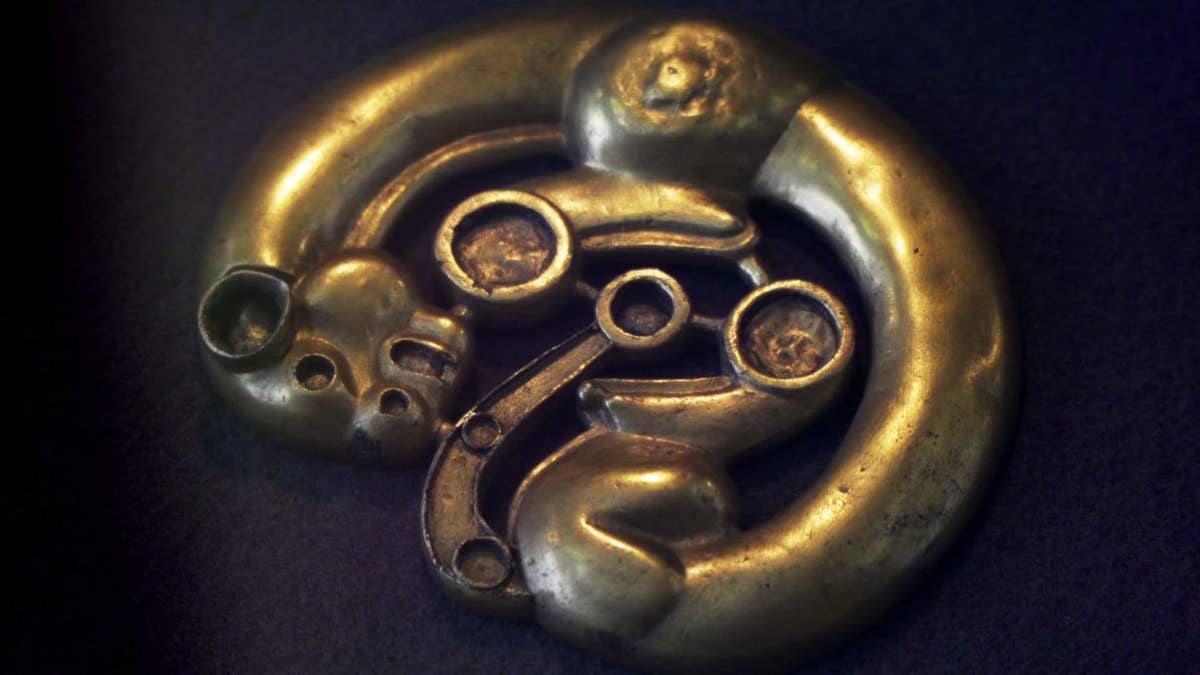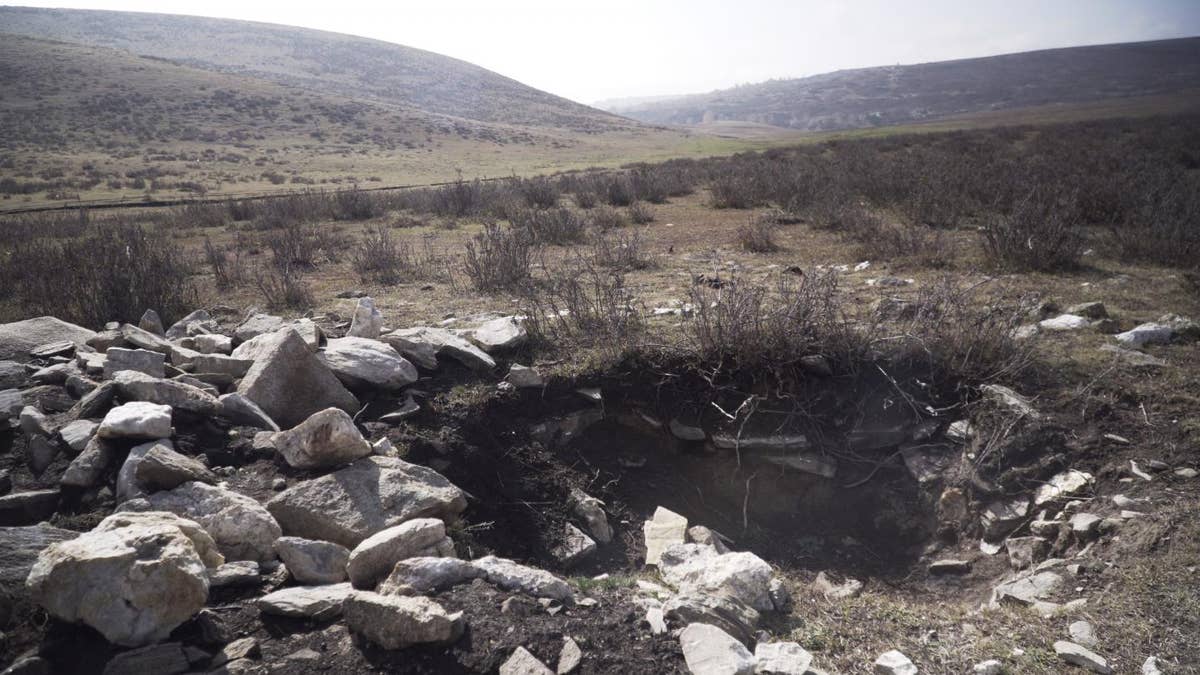
File photo - Prehistoric artwork typical of the artifacts found in early Iron Age tombs. (Trevor Wallace)
Scientists are using high-resolution satellite imagery to identify places where looters have been ransacking ancient tombs.
The tombs are in a remote part of northwest China, according to experts from the University of Bern in Switzerland and the University of Sydney.
“Due to the large number of visibly impacted burial mounds, it becomes clear that the bulk of cultural heritage of the Early Iron Age in this area is under threat,” explain the researchers in a study published in the journal Heritage. “The looting, however, continues until present day.”
SPY SATELLITES, DRONES, HELP EXPERTS DISCOVER LOST CITY IN IRAQ FOUNDED AFTER ALEXANDER THE GREAT
"We specifically chose an area of interest in Xinjiang, China. We assumed that, due to the remoteness and the heavy presence of security forces in the region, we would find a higher proportion of intact tombs" explained Gino Caspari, from the Institute of Archaeological Sciences at the University of Bern, in a statement.

A recently looted tomb in Northwest China (Trevor Wallace)
However, the satellite data reveal that looters had already gained access to most of the tombs. “More than 74.5 percent of the analyzed burials were already destroyed and plundered," Gaspari explained.
Ancient nomadic tribes in the region would bury their dead in large mounds, often with gold jewelry and elaborate weapons, making an attractive target for tomb raiders.
NEW VIKING SITE IN NORTH AMERICA? EXPERTS EYE SATELLITE DATA FOR POTENTIAL DISCOVERY
Gaspari studied satellite data going back to 2003 and found that, since then, the number of looted tombs has increased significantly. "The last untouched archaeological sites of the ancient steppe nomads are under imminent threat," he said in the statement.
Archaeologists also conducted on-ground surveys to measure the scale of the destruction.
Satellite data can be a valuable tool for archaeologists. Experts, for example, have harnessed spy satellite imagery and drones to help identify the site of an ancient lost city in Northern Iraq.
Researchers have also trawled through satellite images in the search for Viking settlements in North America.
Follow James Rogers on Twitter @jamesjrogers




















